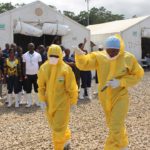It has been reported that eighty five refugees have died in Sango Bay in Rakai district, over the past two years.
Most of these refugees, who fled from Tanzania fearing persecution, usually die of diseases that can be managed like Malaria, Dysentery, Typhoid and diarrhea.
Needless to mention, there are almost similar statistics from other refugee camps in the country, where the refugees are faced with the same challenges.
But because the resource purse of Uganda is still small, oftentimes the country finds itself in dilemma, unable to be of much help to these hapless people who are fleeing from injustices elsewhere.
Uganda could simply be Africa’s most receptive country when it comes to the issue of hosting refugees and has over the years been ‘home-away-from-home’ for several Rwandans, Barundi, South Sudanese, Somalis, Congolese and, in the not so distant past, even Kenyans.
That noted however, it is important to note that refugees flee their countries of origin, trying to find a place where they deem it safer than where they left in the first place. On arrival, most of them first seek for the basic needs like food and shelter. And, as time progresses and they realize that they are not about to go home they start seeking for education for their children, a piece of land to grow some food and work to enable them have some little money in the pocket. Of course some of those needs can be met through cooperation with the host communities. But, as earlier noted, Uganda as a country can only do so much to make the refugees get a semblance of comfort; it is a poor country that also faces huge challenges mostly in the provision of healthcare and education, sectors that are otherwise critical to the wellbeing of the refugees.
And that is where the amplified interventions of the respective UN agencies like the World Health Organisation (WHO), the World Food Programme (WFP) and the United Nations Children’s Educational Fund (Unicef) become necessary, because these people also need to live a ‘normal’ life.






